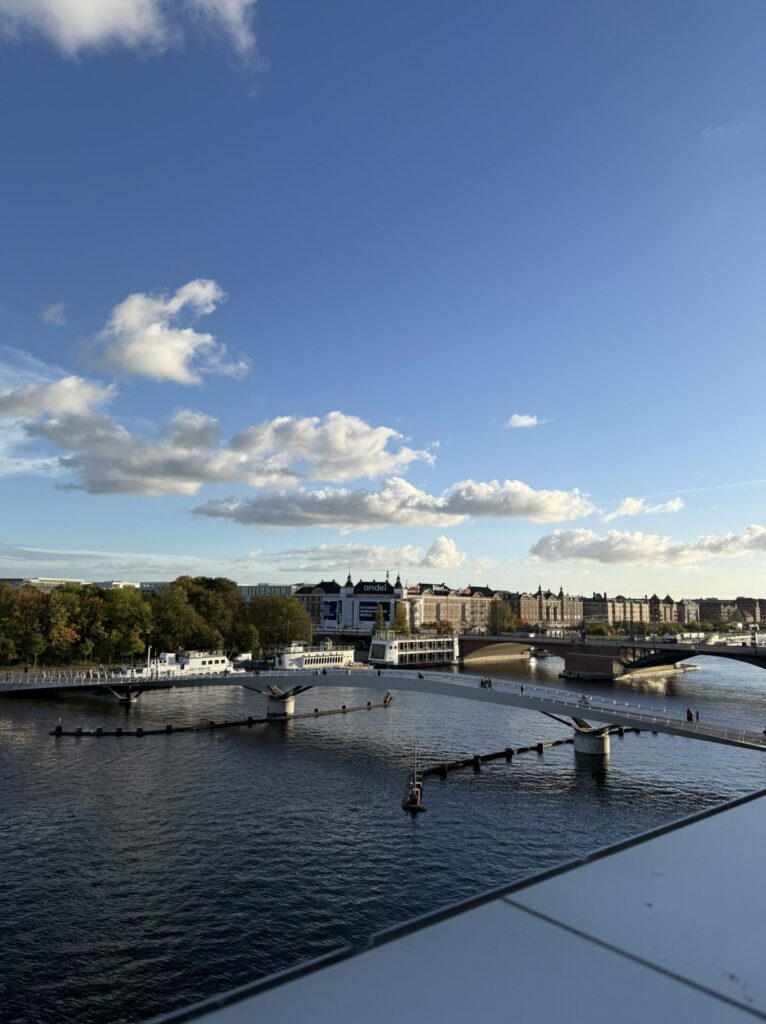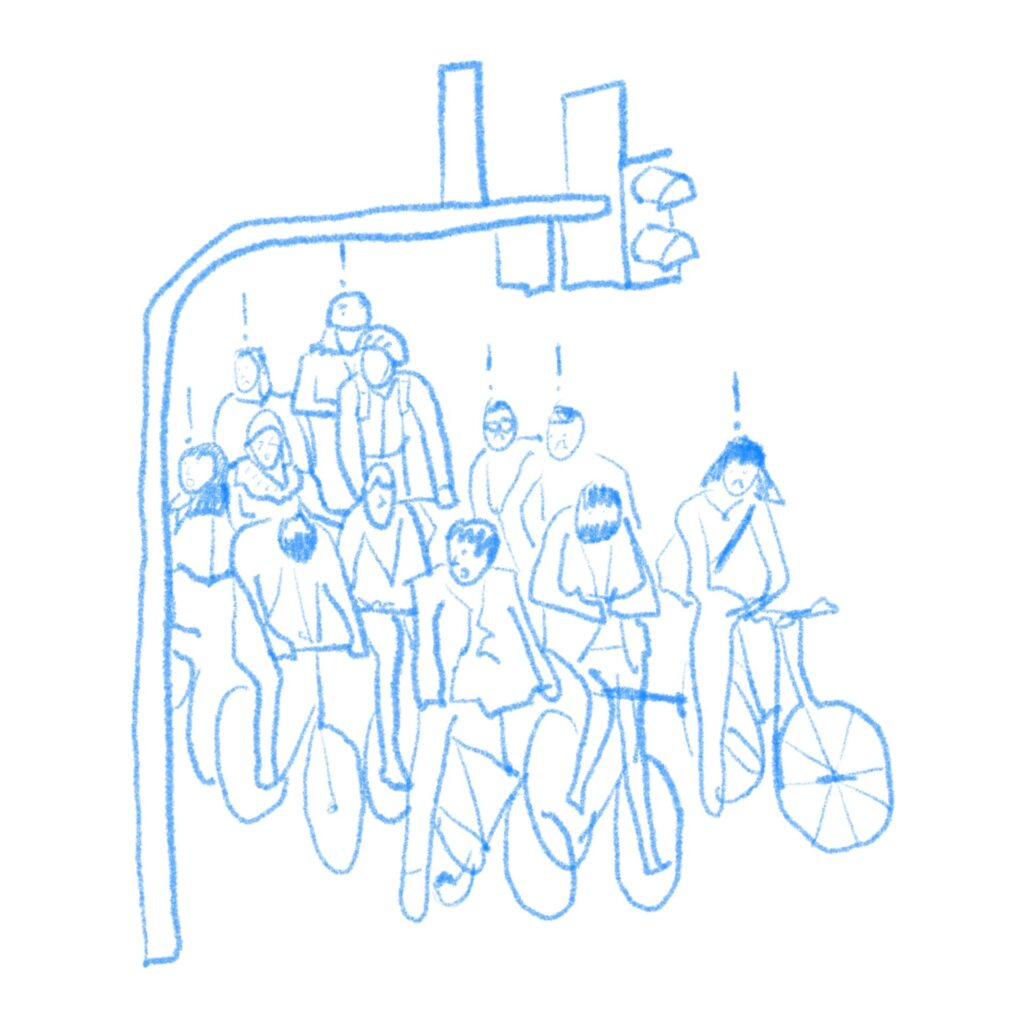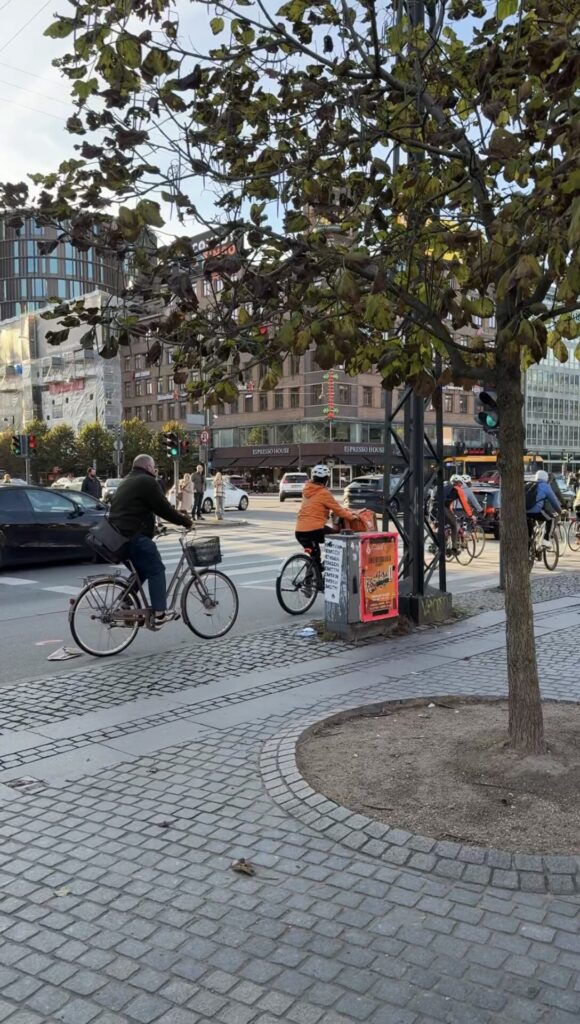Blog:
Waddling in Bike Traffic
The Infrastructure Institute blog features reflections from staff and guest contributors that explore various elements of global urban infrastructure.
Waddling in Bike Traffic
By Phat Le
November 2025
As I observed the bike traffic in Copenhagen, seeing a European scale of cyclists was revealing. Picture bunches of adults stuck on their bikes, teetering back and forth for balance. It’s high camp. As I watched cyclists in bike lanes become visibly frustrated, all trying to either pass each other or get out of the lane, I was reminded that no city is a utopia.
Don’t get me wrong – biking in Copenhagen is enjoyable and efficient. The city is mostly flat, and there is a “Cycle Superhighway Collaboration”, which is a network of cycling commuter routes that aims to make commuting the safest and most efficient mode of transportation. According to the Office for Cycle Superhighway – a collaboration between 28 municipalities and the Capital Region of Denmark, who are partnering to establish coherent bicycle infrastructure across municipal borders – 85% of cyclists who use the superhighway do so more than once a week, and 14% of new users previously commuted by car. Denmark has consistently invested in cycling infrastructure, and the effectiveness is reflected by the continually growing number of people commuting by bike.
Cycling infrastructure has evidently been a thoughtful investment in Copenhagen. This commitment is reflected in the small details: bike shares have phone holders for map-reading, and bikes can be picked up from, and returned to, virtual hubs found on an app, rather than from specific docking stations.
When we think of bike-oriented cities, places like Amsterdam and Copenhagen come to mind. Their cycling infrastructure has been extensively written about, and they often top the “most livable cities” lists. In architecture school, the city of Copenhagen is frequently used as a case study for the ideal city – great architecture, work culture, cycling infrastructure… and a propensity for romantic dips in a canal.
Toronto, on the other hand, feels like the opposite – messy and unpredictable. Commuters in Toronto know the traffic as a character of its own. In some ways, the gridlock has become an equalizer, even making pop star Niall Horan walk to his own concert at the Scotiabank Arena. Despite the fact that cycling is an alternative to cars that many Torontonians use, our own bike lanes are often contentious.
Honestly, seeing a bit of the chaos in Copenhagen made me appreciate Toronto more. Cities aren’t great because they’re perfect; they’re great because of the opportunities they present to create stories and share experiences. Toronto can get a bad rap, but it’s not all doom and gloom. I remember when Vox did a video comparing Chicago’s transit system to Toronto’s, and called Toronto a “model city” for transit. As a Torontonian, that seemed inaccurate. And yet, in the scheme of things, we’re not that bad. Shared experiences, like being frustrated with gridlock and navigating the roads as a cyclist, offer a collective annoyance that we can, and often do, bond over.
People bond quickly through collective complaining, especially when the issue seems preventable. I probably wouldn’t find Copenhagen’s bike jams as funny if I were stuck in them regularly – I’d be really annoyed, as they were, if someone’s wheel was hitting mine or other cyclists kept trying to cut across the lane. But sitting on the sidewalk, watching it all play out, it felt wholesome – like I was watching the human side of a city that is so often painted as perfect.
For a deeper look at why the data and public perception of bike lanes don’t always align, tune in to the Good for Cities episode “Are Bike Lanes Good for Cities?“
About the author:
Phat Le is the architectural designer for the Infrastructure Institute and a sessional lecturer at the Daniels Faculty of Architecture, Landscape, and Design at the University of Toronto. Outside of work, he enjoys making floral arrangements from his garden and DJing.
References:
Cycle Superhighways Secretariat. (n.d.). About: Supercykelstier. https://supercykelstier.dk/english/about/
McGrane, S. (2012, July 17). Copenhagen Journal: Commuters pedal to work on their very own superhighway. The New York Times.
https://www.nytimes.com/2012/07/18/world/europe/in-denmark-pedaling-to-work-on-a-superhighway.html

Pictured above: Lille Langebro cycle and pedestrian bridge in Copenhagen.

A doodle by the author depicting impatient cyclists as they queue at a stoplight.

Pictured above: cyclists queue at a busy intersection in Copenhagen.